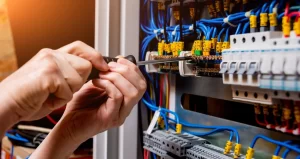As the technology all over the world is getting an upward thrust, we are getting to explore more elements and materials that can be used in our manufacturing processes. Some of the common manufacturing materials that we are using today can also prove harmful for humans as well as for the environment. These hazardous materials must be restricted for the benefit of all. Therefore, to maintain a standard of restriction, RoHS guidelines were introduced. It stands for Restriction of Hazardous Substances.
In this blog, we will understand RoHS in detail:
What is RoHS certification?
Also, known as the Directive 2002/95/EC, RoHS restricts the use of hazardous materials with the help of this certification. It is mostly applied to the electrical and electronic products.
Which materials are restricted under this directive?
RoHS bans products containing Mercury, Lead, Cadmium, Hexavalent Chromium, polybrominated diphenyl ethers and polybrominated biphenyls, if they are found above the permissible limits.
What are the benefits of this certificate?
The RoHS certification ensures the electrical and electronic products are of good quality with no significant health impact. The risk of the workers in the electronic industry can be reduced with the usage of lead-free solders and components. It also reduces the damage caused to the environment. As a result, the defects in the products are also reduced while the efficiency is increased.
Along with it, the value and reputation of the brand and the organisation also increases and the customers get ensured about the product quality. With the RoHS certification, the reliability of the product increases and the recycling process is also refined.
Why should one comply with the RoHS?
The restricted materials can pose serious hazard to everything around you. Further, the occupational hazard of these chemicals is also extremely high at the manufacturing and recycling plants. Hence, complying with the directive will assure a healthy production and usage process where everyone is benefited.
How are the products tested for compliance?
There are multiple processes available to check and test for compliance. Various RoHS analysers are used, like XRF metal analysers or X-ray fluorescence. These methods can appropriately detect and verify the presence of restricted metals in the products.
If you are also in the similar business that requires rigorous testing of products for harmful components, then make sure RoHS compliance is the first thing that you take note of.




